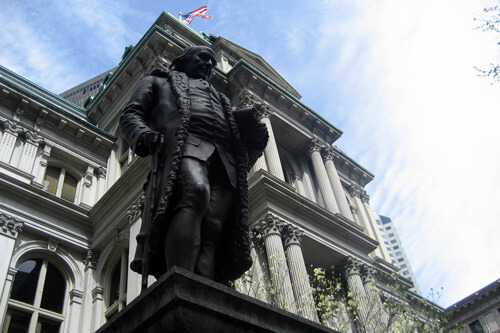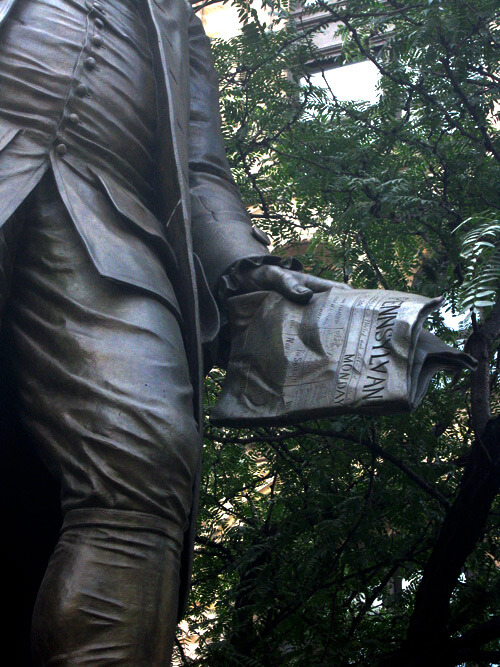Parks, gardens, museums, and public buildings offer some of the loveliest photographic subjects possible – statuary. Quite often it is difficult to convey the power of a large statue or public memorial in a photograph. Think of the enormous Lincoln Memorial in Washington, D.C., although most people have seen photographs of it they are still surprised at its enormity in person.
Does this mean that photographing a statue or memorial is not a good idea? Absolutely not! The remarkably beautiful settings and the fine details of these works always makes them a good choice. The thing to remember is that most images just cannot provide the viewer with an idea of their actual size in relation to everyday objects.
This means that the photographer must then focus on the fine details of the statue, or that they must try to capture the object in a beautiful way in its setting.

Photo by Wally Gobetz
A good example of how this can be done exists in the photographs of the famous statue of Benjamin Franklin in Boston, Massachusetts. It sits on a high pedestal and gazes down at those below. It is placed in a park setting, and some of the finest images of this piece have included the changing greenery in the background as they contrast against the dark bronze of the statue.
This doesn’t imply, however, that a standard position on the ground is the only way to get a good photograph of a statue. Let’s again turn to the Lincoln Memorial as an example. When sculptor Daniel Chester French was working on his various “drafts” of the monument he frequently changed the position of the President’s hands. The artist also had life casts of Lincoln’s hands as well. They are a significant issue where the work is concerned, and this means that a photographer might focus on such things as the hands or the face of the statue to make a dramatic photograph of it.

Photo by Peter Roan
Another way to take interesting images of public memorials and statuary is to do so in unique lighting conditions. A park that floodlights its monuments makes for a challenging collection of subjects, but ones that are accented in ways that the sunlight cannot manage.
Clearly the way to photograph monuments, memorials and statues is to stake them out in advance to ensure they are adequate subjects and then simply compose the photograph in a way that allows the viewer to see them in a slightly different fashion or context than they would on a visit.
Top image by James Walsh
